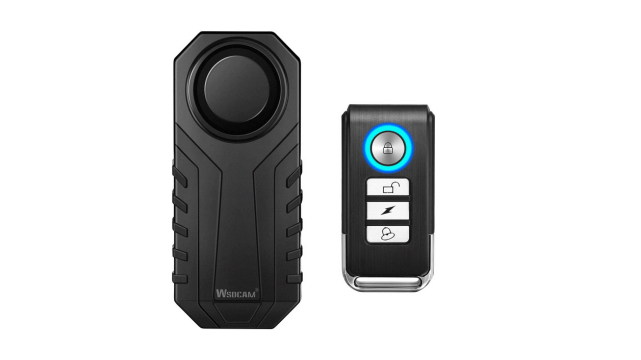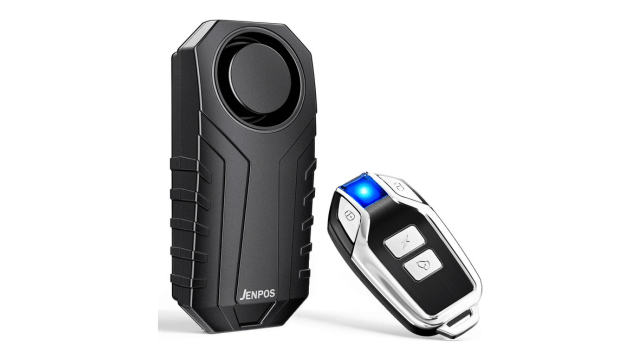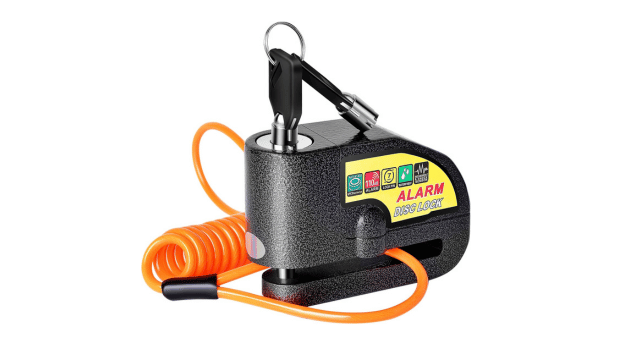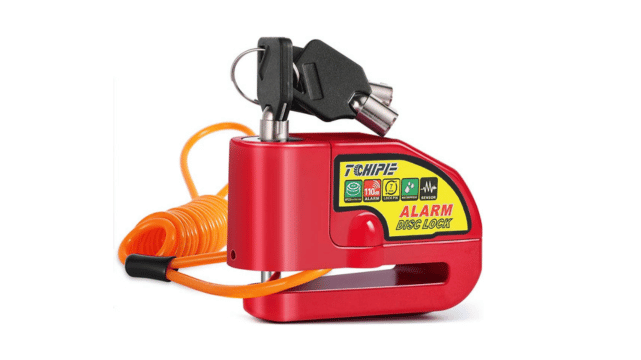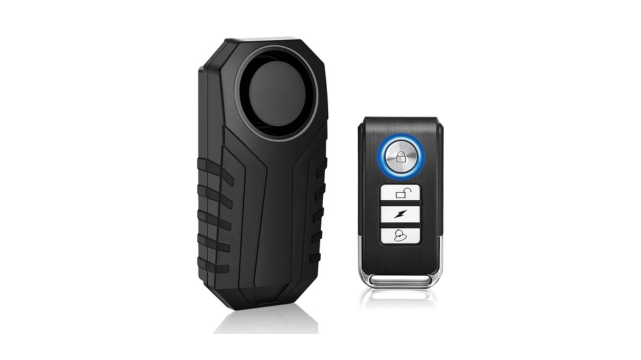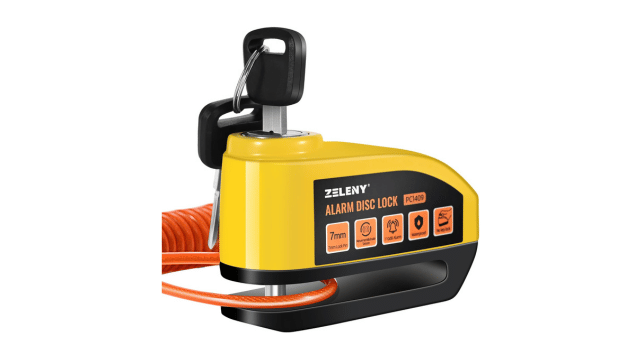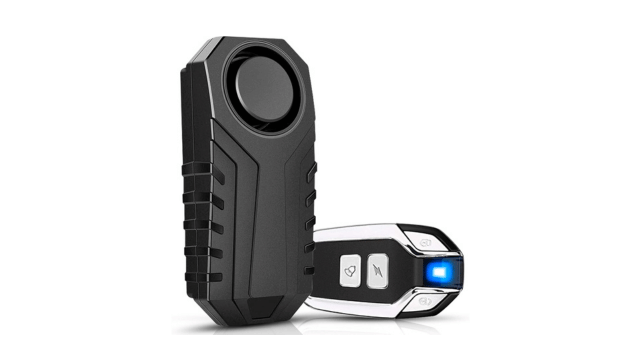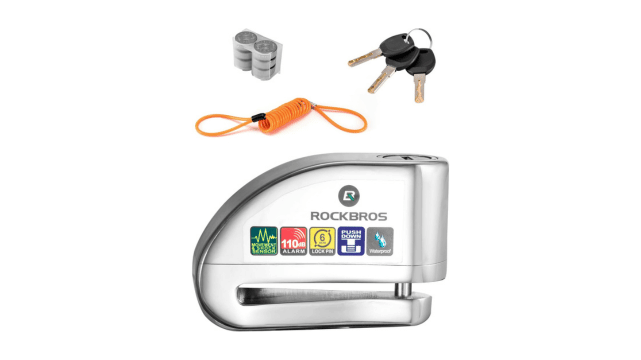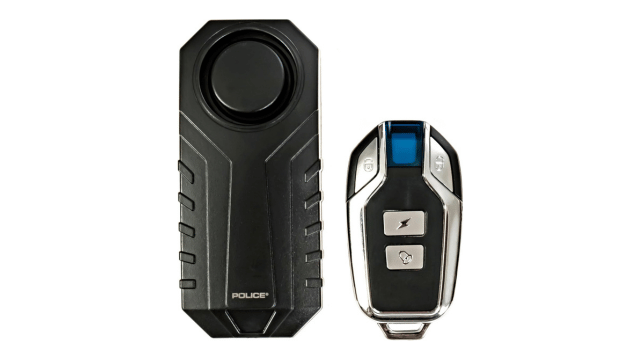Motorcycle theft is a growing concern for riders worldwide, making it essential to invest in a reliable security solution. Motorcycles are often easier to steal than cars due to their lightweight and portable design, which makes them appealing targets for thieves. To mitigate this risk, motorcycle alarms provide a critical layer of protection that deters potential thieves and ensures peace of mind for the owner.
Motorcycle alarms come in various forms, from basic sound alerts to advanced GPS-enabled systems. These alarms not only protect your bike but also notify you immediately if any suspicious activity occurs. This guide will walk you through the different types of motorcycle alarms, essential features to consider, and factors to help you choose the best system for your needs.
Best Motorcycle Alarms Buying Guide
Types of Motorcycle Alarms
Motorcycle alarms come in a variety of configurations, each designed to provide varying levels of protection. Let’s explore the most common types:
1. Basic Alarm Systems
Basic alarms focus on generating sound alerts when triggered by motion or vibration. These alarms are typically easy to install and cost-effective, making them popular among budget-conscious riders.
- Features: Most basic alarms come with sensors that detect movement and activate a loud alarm to deter thieves. While these alarms do not have advanced features like GPS or immobilizers, they offer a deterrent by drawing attention to the bike during a theft attempt.
- Pros: Affordable, easy to install, suitable for entry-level security needs.
- Cons: Lack of advanced features, false alarms possible if sensitivity isn’t properly adjusted.
2. Immobilizer Alarms
Immobilizer alarms add another layer of protection by preventing the engine from starting unless the correct key fob or code is used. This type of alarm can significantly reduce the risk of a thief riding away with your bike.
- Features: Immobilizer alarms use electronic circuits that disrupt the motorcycle’s ignition system, ensuring the bike cannot start without the correct key. Some immobilizers also integrate two-way communication, allowing you to control the alarm remotely.
- Pros: Provides a higher level of security by preventing the engine from starting, reducing theft chances.
- Cons: Typically more expensive and may require professional installation for integration with the ignition system.
3. GPS-Enabled Alarms
GPS-enabled alarms are ideal for riders who want real-time tracking and location data for their motorcycle. These alarms offer the highest level of security, as they allow for recovery even after the bike has been stolen.
- Features: GPS alarms come equipped with tracking technology that transmits the bike’s location to your smartphone or computer. You can monitor your bike’s position in real-time, and many systems allow you to set up geofencing alerts that notify you if the bike leaves a predetermined area.
- Pros: Offers real-time location tracking, higher chances of recovery after theft, customizable alerts.
- Cons: More expensive than other types of alarms, may require a subscription fee for tracking services.
Key Features to Consider When Buying a Motorcycle Alarm
Choosing the right motorcycle alarm involves understanding the features that offer the best combination of security and convenience. Here are the essential aspects to consider:
1. Sensitivity and Range
A good motorcycle alarm should come with adjustable sensitivity settings. This allows you to fine-tune the system so that it responds only to genuine threats, minimizing false alarms triggered by minor disturbances like wind or a passing car.
- Sensitivity: Alarms with too high sensitivity may produce false alarms frequently, which can be frustrating and lead to you ignoring the alarm altogether. On the other hand, a system that’s too insensitive may fail to detect actual theft attempts.
- Range: If you opt for a two-way alarm system or one that integrates with your smartphone, ensure that it has a wide communication range. The range determines how far away you can be from your bike while still receiving alerts or controlling the alarm.
2. Two-Way Communication
Two-way communication allows the alarm to not only alert those nearby but also send a notification to your remote control or smartphone. This feature is essential for riders who want to be informed of any security breaches, even when out of earshot.
- Benefits: With two-way communication, you can control the alarm from a distance, receive instant alerts, and even remotely disable or enable the alarm system. This provides an additional layer of protection and peace of mind.
- Considerations: Be sure to choose a system with a reliable communication protocol and a clear, easy-to-use remote control interface.
3. Durability and Weather Resistance
Motorcycles are exposed to various weather conditions, so it’s essential to invest in an alarm system designed to withstand the elements. Durable, weatherproof alarms ensure your system works reliably, regardless of rain, snow, or dust.
- Material: Look for alarms made from rugged materials that can handle vibrations, shocks, and outdoor exposure without deteriorating.
- Sealing: Alarms with proper weather sealing will prevent moisture and dirt from interfering with the system’s internal electronics, ensuring longevity.
Alarm Installation Process
Installation is a critical factor in ensuring that your motorcycle alarm works effectively. Let’s look at the two main options:
1. DIY vs. Professional Installation
Many motorcycle alarms come with user-friendly designs that allow for DIY installation. However, more complex systems, especially those with immobilizers or GPS tracking, may require professional installation to ensure they function correctly.
- DIY Installation: For riders who are confident in their mechanical skills, installing a basic alarm can be a simple and cost-effective process. These systems often come with detailed manuals and do not require advanced tools or technical knowledge.
- Professional Installation: If you are installing an immobilizer or a GPS-enabled alarm, professional installation is recommended to ensure proper wiring and integration with the motorcycle’s electrical system. This will also help avoid accidental damage to the bike’s electronics.
2. Wiring and Compatibility with the Motorcycle
Ensure that the alarm you choose is compatible with your motorcycle’s make and model. Some alarms may not fit certain types of bikes, or they might require specific adapters or harnesses to integrate with the bike’s electrical system.
- Wiring Considerations: For hardwired alarms, proper wiring is crucial to avoid draining your motorcycle’s battery. Make sure the installation is neat, with secure connections to prevent accidental disconnections while riding.
Power Source and Battery Life
The power source of a motorcycle alarm can impact its performance and longevity. There are two primary options:
1. Battery-Powered Alarms
Battery-powered alarms are independent of the motorcycle’s power system and run on their own battery. These alarms are easy to install, but you need to be mindful of battery life.
- Pros: Portable and easy to install without tapping into the motorcycle’s electrical system. Ideal for those who don’t want to deal with wiring.
- Cons: You’ll need to check and replace batteries periodically to ensure the alarm continues functioning.
2. Hardwired Alarms
Hardwired alarms connect directly to the motorcycle’s battery and offer consistent power without the need for frequent maintenance. However, if not installed correctly, they may drain the battery over time.
- Pros: Continuous power supply, no need to worry about replacing batteries.
- Cons: Professional installation may be required, and there’s a risk of battery drain if the alarm isn’t designed to minimize power consumption.
Additional Features and Technologies
Motorcycle alarms come with various add-on features that enhance their functionality. Here are some of the most useful ones:
1. Shock and Tilt Sensors
These sensors detect movement or tampering, setting off the alarm if someone tries to move or tip over the bike. This feature is essential for detecting theft attempts where the thief tries to move the motorcycle without starting it.
- Shock Sensors: Detect any sudden impacts or vibrations.
- Tilt Sensors: Activate the alarm when the motorcycle is tilted beyond a set angle, protecting against towing attempts or being lifted into a vehicle.
2. Remote Start and Engine Immobilizer
Some advanced alarms come with remote start capabilities, allowing you to start your bike from a distance. Additionally, engine immobilizers prevent the engine from starting unless the alarm is deactivated.
- Benefits: Remote start can be convenient in cold weather, while engine immobilizers provide an extra layer of security.
3. Smartphone Integration and Alerts
Many modern motorcycle alarms offer smartphone integration, enabling you to control the alarm and receive notifications directly on your phone. This feature is especially useful for GPS-enabled alarms that provide real-time tracking.
- Apps: Look for systems that come with intuitive smartphone apps that allow you to arm or disarm the alarm, track your bike, and set up geofencing alerts.
Legal and Safety Considerations
When installing a motorcycle alarm, it’s essential to ensure that you comply with local laws and safety standards.
1. Compliance with Local Laws
Some jurisdictions have regulations regarding the noise levels of alarms, especially in residential areas. Additionally, some places may have laws about the types of theft prevention devices you can install.
- Noise Levels: Check the maximum decibel limit for alarms in your area to avoid fines.
- Alarm Type: Ensure that the alarm system you choose complies with any regional restrictions on security devices.
2. Ensuring Alarm Safety for Riders and Passengers
While motorcycle alarms enhance security, they should not compromise rider or passenger safety. Ensure that the alarm installation does not interfere with the bike’s performance or safety features, such as airbags or braking systems.
- Interference: Avoid placing sensors or wiring in areas that could disrupt the bike’s control systems.
Benefits of Using Motorcycle Alarms
Investing in a motorcycle alarm has numerous benefits, from preventing theft to providing peace of mind. Let’s look at some of the key advantages:
1. Theft Prevention and Peace of Mind
Motorcycle alarms serve as an effective deterrent against theft. The loud alarm sound, immobilizer features, and GPS tracking make it challenging for thieves to successfully steal a bike without being noticed.
2. Improved Insurance Rates
Many insurance companies offer reduced premiums for motorcycles equipped with anti-theft devices like alarms, immobilizers, and GPS trackers. Be sure to check with your insurance provider to see if installing an alarm could lead to savings on your policy.
3. Enhanced Control with Remote and Smartphone Features
Modern alarms with smartphone integration allow riders to control and monitor their motorcycle’s security remotely. This level of control offers greater flexibility and ensures you’re always aware of your bike’s status.
Top Motorcycle Alarm Brands
Some of the most reputable motorcycle alarm brands offer a range of features and benefits. Here are a few:
1. Scorpio
Known for their advanced systems, Scorpio offers alarms with features like GPS tracking, immobilizers, and smartphone integration. Their systems are user-friendly and highly regarded for reliability.
2. Gorilla Automotive
Gorilla provides durable, weather-resistant alarms that focus on motion detection and sound alerts. Their alarms are easy to install and offer solid entry-level protection.
3. Xena
Xena specializes in disc-lock alarms, combining physical security with sound alerts. Their alarms are portable and can be used as standalone theft deterrents or in conjunction with other systems.
Final Verdict
Choosing the best motorcycle alarm comes down to your specific security needs and budget. If you’re looking for basic theft prevention, a simple motion-detecting alarm might suffice. However, if you require advanced protection and real-time tracking, GPS-enabled systems with smartphone integration provide the ultimate peace of mind.
Consider features like shock and tilt sensors, two-way communication, and durability when selecting an alarm. Whether you opt for basic, immobilizer, or GPS-enabled systems, investing in a reliable motorcycle alarm is crucial for safeguarding your bike against theft.

